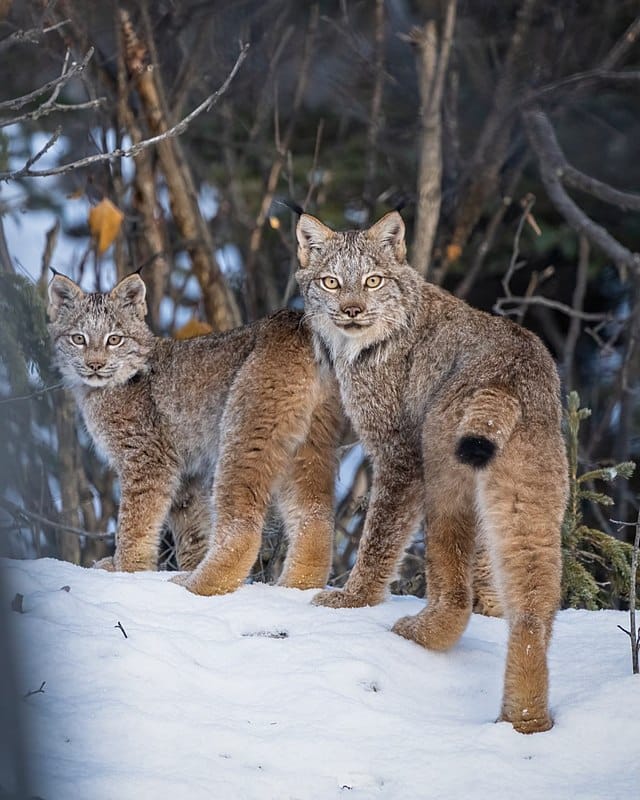This feline can distinguish a rodent from 75 meters away. The name of this species comes from a Greek term meaning ‘bright eyes’. It has yellowish-green eyes ready to see both day and night.
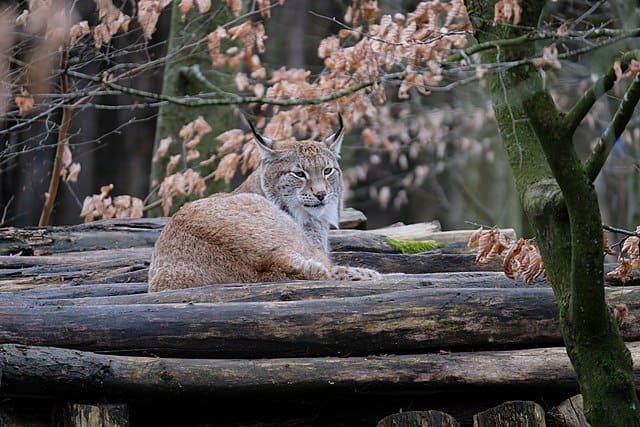
If you also like to read more about Big Cats, we have posts on the best places to see Tigers and leopards!
If you would like to read about the Lynx v Bobcat, we have a blog post on this very interesting comparison between two cats!
Key Points
| Key Points | Information |
|---|---|
| Name | Iberian Lynx or Lynx Pardinus |
| Habitat | Iberian Peninsula, specifically in Spain and Portugal |
| Distinctive Features | Triangular ears with hair on the tip, small mane, spots, tail, capable of jumping up to 5 meters |
| Evolutionary History | Migrated from North America 2.5 million years ago |
| Role in the Ecosystem | “Umbrella species” protecting its habitat and other species |
| Diet | Mainly rabbits, but also birds, small mammals, and reptiles |
| Threats to Survival | Habitat destruction, illegal hunting, and road construction |
| Conservation Efforts | Captive breeding programs, habitat preservation, and more |
| Population Status | Critically endangered, but efforts have led to population increase |
| Geographic Distribution (Eurasian Lynx) | Once widespread in Europe and parts of Asia |
| Where to See Iberian Lynx | Sierra Morena, Parque Nacional y Natural de Doñana, and more |
| Adoption Option | WWF offers opportunities to help protect these elusive animals. |
Shy but beautiful Lynx
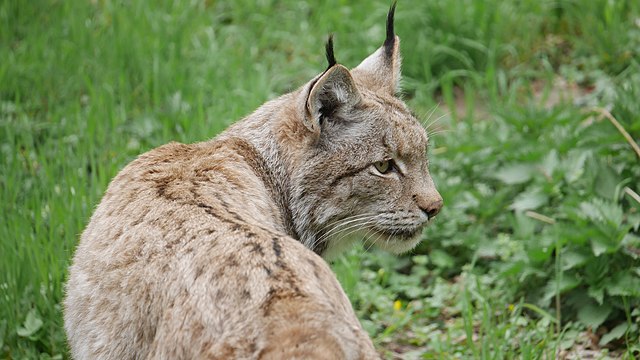
The lynx have large, pointed ears topped by a plume of black hair, something very suitable for hiding in the undergrowth. Sideburns of hair hanging from their cheeks and, when mature, recall the beard of a human being. Their skin is full of leopard-like spots but much smaller than other wild cats.
The Lynx pardinus has been in danger for a long time and there are several reasons why this particular feline is at risk of disappearing, such as the destruction of its habitat and illegal hunting, among other reasons.
What is the Iberian Lynx?
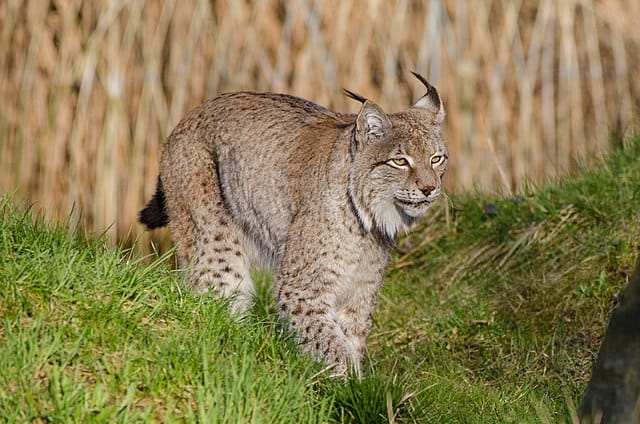
The Lynx Pardinus is a medium-sized feline that can be found on the Iberian Peninsula, specifically in Spain and Portugal, south of the European continent.
Its most distinctive features or characteristics, apart from its medium size within felines, are its triangular ears with hair on the tip, its small mane around the cheeks and neck, its spots, its tail of between 8 cm and 15 cm and its way of hunting, as it is capable of jumping up to 5 meters away.
Iconic Animal
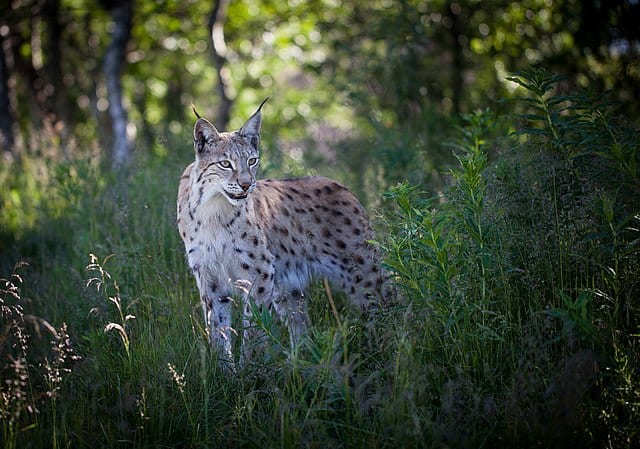
The lynx was established as a species some 1.8 million years ago in one of Europe‘s main glacial refuges: the Iberian Peninsula. It is, therefore, a jewel of the Iberian Mediterranean mountain.
The breeding program is currently in progress at the Acebuche Breeding Centre, located within the Doñana National Park and the Zoo Botanical area in Jerez de la Frontera, Cadiz.
These facilities have diverse roles, from quarantining lynx to nurturing their young and offering shelter to both young and adult lynx. This initiative is a crucial step in protecting some of the world’s most endangered feline species. Without these efforts, these remarkable animals might be on the brink of extinction.
Why is it essential to save the lynx?
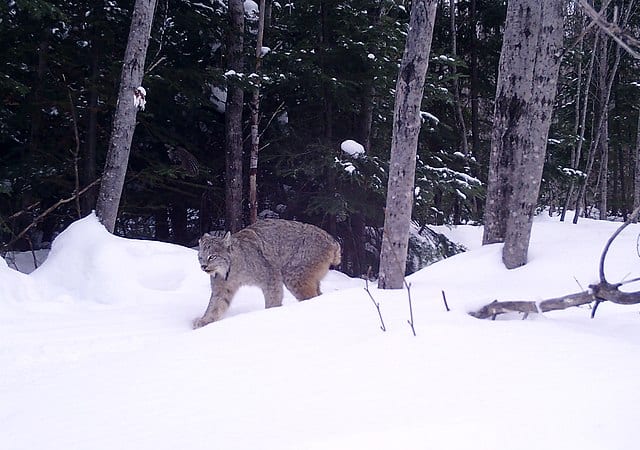
The Iberian lynx is endangered, and it is also what is called an “umbrella species.” By conserving the lynx, we are also protecting the habitat in which it lives, specifically, the Mediterranean forest and many other species.
Its role as a top predator helps control the overabundance of other predators like foxes and mongooses. Interestingly, this reduces the pressure on the rabbit, the lynx’s primary prey, which is also a crucial food source for other threatened species like the Iberian imperial eagle.
In small populations the risks associated with low genetic diversity are significantly higher. That’s why, in addition to habitat restoration programs, captive breeding projects are initiated to ensure an adequate number of healthy animals.
How can we protect the Iberian Lynx?
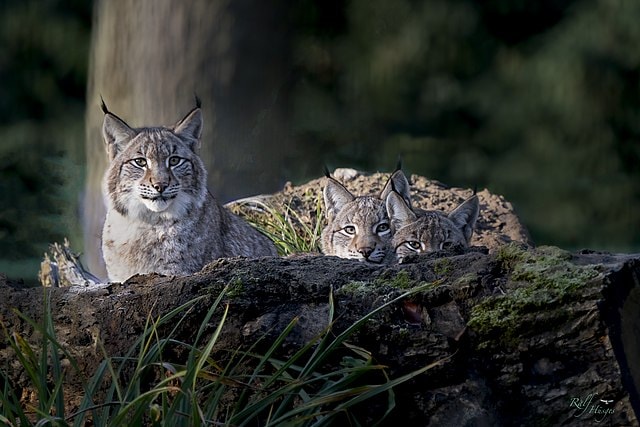
Therefore, the survival of the lynx is closely related to hunting activity, i.e. hunting. Its control and adequate management are absolutely essential to avoid a safe extinction of the species.
Also of great importance is the impact that the construction of roads, railways and hydraulic infrastructures have on the lynx since they alter its habitat and fragment the territory, causing the loss of critical areas.
There are numerous and tremendous decisions taken by public administrations that slide the world’s most endangered feline toward definitive extinction.
A Beautiful Animal
In recent years, the approval of the National Hydrological Plan stands out. This plan includes the construction of a dozen large reservoirs in the lynx distribution area. Additionally, the Infrastructure Master Plan includes several cases of highways, motorways, and high-speed trains in areas of interest to the lynx.
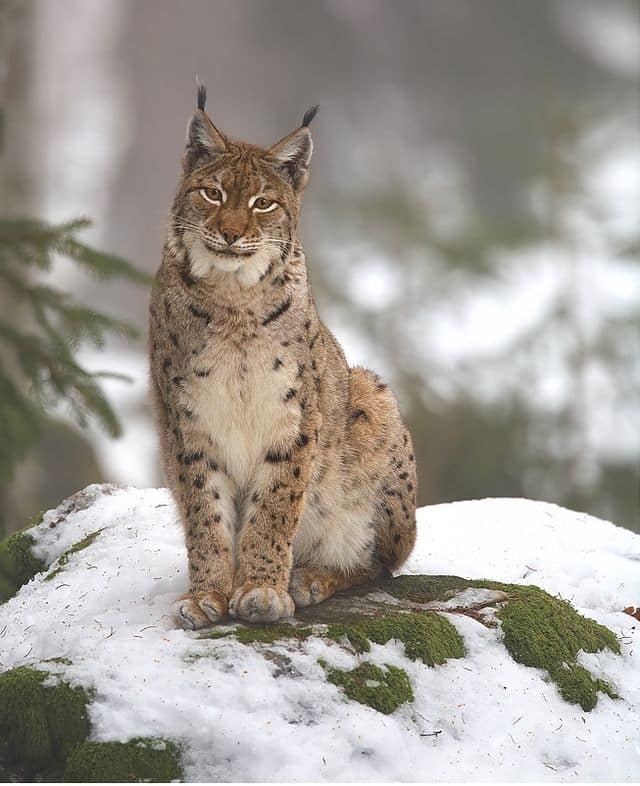
The construction of products (or green bridges) to prevent road accidents is one of the measures that can reduce deaths. As animals can move from one habitat to another through a bridge with vegetation above the roads.
The captive breeding program also ensures the species’ genetic material conservation.
In the breeding program, captive lynx are carefully paired to produce offspring. These young lynx will eventually be released into their natural habitat.
The program operates at the Acebuche Breeding Centre, located in Doñana National Park and the Zoo Botanical area in Jerez de la Frontera, Cadiz. These facilities have multiple roles, such as quarantining lynx, caring for their young, and housing both young and adult lynx. This initiative is a vital step in protecting some of the world’s most endangered feline species, preventing their potential extinction.
See here more endangered animals in Europe.
Good news
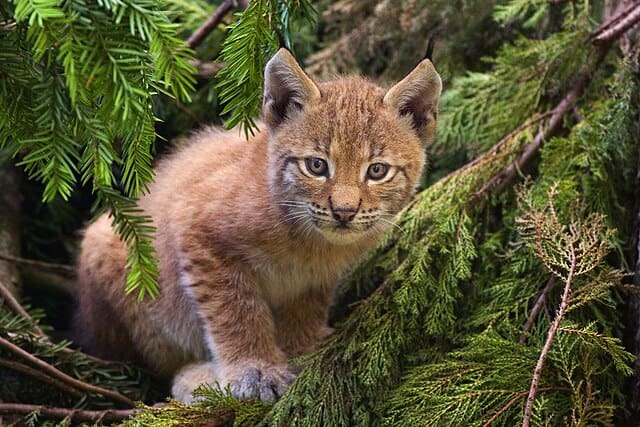
The Lynx, the world’s most endangered feline is included as a ‘critically endangered‘ species on the Red List of the International Union for the Conservation of Nature (IUCN).
A population in 2002 barely reached 100 individuals in Spain and was reclassified as ‘endangered’ in 2015.
In Extremadura, the first releases began in 2014 in the Matachel Valley, where the most prominent nucleus of the lynx population is currently found. Here it has “an ideal Mediterranean habitat and a high population of rabbits, the main food of the feline.”
The objective now is to achieve a quantifiable population increase and promote connectivity between population nuclei in all reintroduction areas.
You can read more about highly endangered animals in the following blog.
Eurasian lynx habitat
The Eurasian lynx is one of the most widespread cat species. Its European distribution area reached from the Pyrenees in a wide belt to the Ural Mountains at the beginning of modern times.
| Region | Eurasian Lynx Presence |
|---|---|
| Notably Absent In | Iceland, British Isles, Mediterranean islands, coastal areas around the North Sea, Denmark, southern Norwegian fjords, far north of Fennoscandinavia, including Kola Peninsula |
| Asia | Widespread from Urals to the Pacific Ocean, northern China, Tibet, Mongolia, Turkestan. Northern boundary at the Arctic Circle. |
| Southern Range | Extended to Nepal, northern India, northern Pakistan, Persia, possibly Palestine. |
| Historical range | Extinct in the Western areas of Europe by 1960, but survived in northern, eastern, and southeastern Europe and most of Asia. Westernmost presence around 1960 in southern Sweden, eastern Poland, and eastern Slovakia. |
The Eurasian lynx and the Canada lynx is like a mysterious traveler in the cat world. While it’s absent in some parts, like the British Isles and Mediterranean islands, it thrives in others.
Imagine it roaming across its lynx territory in the vast Siberian wilderness, from the Urals to the Pacific Ocean. It even claims the title of the northernmost feline species, with its presence stretching all the way to the Arctic Circle.
And down south, these wild cats ventures into territories as far-reaching as Nepal, India, Pakistan, Persia, and perhaps even Palestine. These are the most elusive animals.
In Europe, the Eurasian lynx faced challenges and close calls. The lynx population nearly vanished by the mid-20th century due to habitat loss. But there were pockets of resilience. In parts of Austria, it held on until 1918.
Yet, by 1960, these big cats had mostly faded from Northern Europe, making its final stand in places like southern Sweden, eastern Poland, and eastern Slovakia.
This journey paints a fascinating picture of the Eurasian lynx’s remarkable survival story, a tale of resilience and adaptation across diverse landscapes.
The Canada lynx mainly lives in the boreal forests of Canada and Alaska.
How to meet the Iberian Lynx
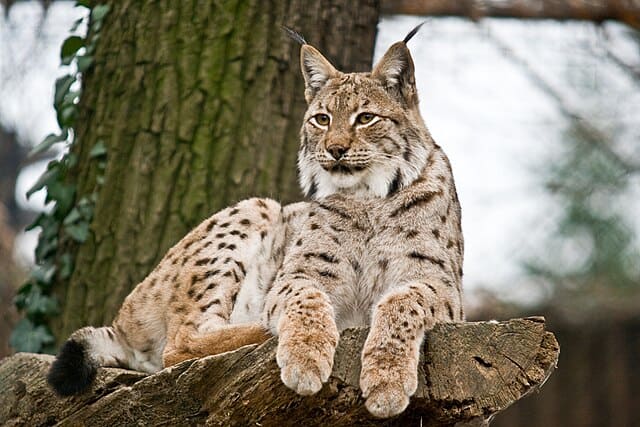
To be able to see the these wild in freedom is not an easy task due to its scarce population. But with luck and time, you will be able to see these big cats in the wild.
Its geographical distribution throughout the peninsula in its day was much more comprehensive than the current one. Now there are very specific focal points in Andalusia to be able to see them.
Sierra Morena
There are currently two well-differentiated population centers: The shared area of Sierra de Cazorla and Sierra de Andújar. Between Córdoba and Jaén, you can easily organize a weekend to enjoy the area. They like to traverse deep snow.
We advise you to place yourself in a viewpoint or observatory with a good view of the mountains and good binoculars.
It is important to be silent and attentive, as these big cats avoid humans. Make continuous sweeps of the slopes of deep snow with the binoculars, slowly, because maybe you can see some on a rock resting and sunbathing.
Parque Nacional y Natural de Doñana
We care about responsible tourism. In the southwestern part of Andalusia, mainly within Huelva, there’s a National Park that hosts the largest population of Lynx in Spain. This park also serves as a stopover for numerous migratory birds on their way to Africa. If you’re interested in spotting these magnificent felines, a route through the lush vegetation of the Raya Real area in Coto del Rey is your best bet. You might just get a glimpse of these elusive creatures there.
You can visit its official website, where you will also find guided tours.
The Iberian experience.
The Iberian Lynx experience, with “Untravelled Paths” offers a guided tour in the direction of Andalusia for four nights. The following link will find all the information you need: this.
Adopt an Iberian Lynx.
Yes, as you read it. WWF (The World Wide Fund for Nature) is an international non-governmental organization working in the field of wilderness preservation, and the reduction of human impact on the environment
This time they offer us the opportunity to help these cute cats from home. You can adopt your little lynx here.
Summary of Best Places to See Lynx
The lynx is a beautiful animal worth seeing in the wild. The lynx lives as a loner in large forest areas. The cat of prey, also called “brush ear”, was once widespread in Western Europe.
Its worst enemy was always man, who pursued it mercilessly. The most giant cat in Europe was almost exterminated by the targeted persecution.
Today there are again single specimens living in some German low mountain ranges. Also have a look at our other Big Cats or interesting comparisons between lions v tigers in the following blog post Lion vs Tiger or comparisons between tiger v jaguar in the following post.
Join our Forum for free today!

- Third Elk Incident in Two Weeks in Estes Park, Colorado and How to Stay Safe - July 4, 2024
- 17 Animals That Mate For Life - June 24, 2024
- 13 Animals That Lay Eggs (Some Might Surprise You!) - June 16, 2024

